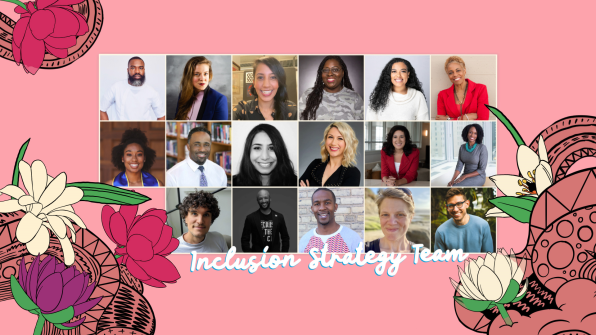In 2017, Netflix added “inclusion” as one of its cultural values—and to no one’s surprise, there was valid reason to do so.
At the time, Netflix’s U.S. workforce included only 6% Hispanic/Latinx and and 3.8% Black employees. Asian representation fared better at 25.9%—but all of the above paled in comparison to the 46.1% of white employees.
Enter Vernā Myers, a diversity and inclusion consultant with 20 years experience who joined Netflix in 2018 as its VP of inclusion strategy.
“This company impressed me not because it was perfect, but because it is after perfection, it is after growth, it is after improvement,” Myers says.
WATCH: Netflix is disrupting the entertainment industry by fighting inequality
Myers and her team have been tasked with elevating inclusion internally at Netflix across racial and ethnic backgrounds, gender, sexual orientation, and so forth. Part of Myers’ work has culminated in Netflix’s first ever inclusion report, breaking down where the company stands now and the roadmap it’s put forward to do better. Along with the report is the short film Sowing the Seeds, which includes interviews from Netflix’s top brass and creators for the platform.
“We have a story to tell that will encourage other people to keep this work going and to recognize that it is a process,” Myers says. “What a lot of companies miss is that they haven’t given the full-time commitment to creating this work. And so it was just an opportunity for us to say, ‘We’re in it. We’re not perfect.’ Part of how we think about ourselves at Netflix is we got a long way to go.”

Also outlined in the report are Netflix’s initiatives targeted toward improving representation, e.g. instituting its first technical bootcamp aimed at closing the gap for Black programmers, as well as efforts to provide support systems for its employees with 15 employee resource groups such as Indigenous@Netflix (Indigenous, Native, First Nation employees and their allies), Swana+ (employees from Southwest Asia, North Africa, Neighboring Regions, and allies); The Village (parent employees, caretakers, and allies); Accessibility (people with disabilities and their allies); and more.
“Diversity or representation is really about the numbers, but inclusion is about the quality of the experience and the ways in which that environment is allowing people to show up [as] their best selves,” Myers says. “A lot of the work is qualitative. You got to figure out what are people feeling, what are they experiencing, and what do we need to do in order to make sure that there is opportunity, fairness, a lack of bias, that kind of thing.”
To that end, Myers’s goal is to get employees to see through what she refers to as an “inclusion lens.”
“We’ll never be able to blanket the whole company. So we need everyone with a certain kind of understanding and vocabulary and concepts to use those, to look at what they’re doing every day, who they’re hiring, how they’re promoting, how they treat people,” she says. “Even in a meeting, who gets heard? Who doesn’t get heard? How do we listen to different languages and ideas? How do we bring perspectives? All of that is the work of inclusion.”
In spotlighting Netflix’s inclusion efforts in a report and film, Myers hopes that it will aid other companies and employees in building out practices that work for them.
“No matter how great we are on any particular thing, we’re always going to be trying to improve. We wanted to invite people to see a little bit about our journey, to be enthusiastic and inspired, but also to recognize that we are part of a larger system,” Myers says. “We talk about it a lot as a journey, and our hope is that people get inspired and want to take that journey with us, either in their own individual lives or in their company.”
Read Netflix’s full inclusion report here.








 User Center
User Center My Training Class
My Training Class Feedback
Feedback












Comments
Something to say?
Log in or Sign up for free